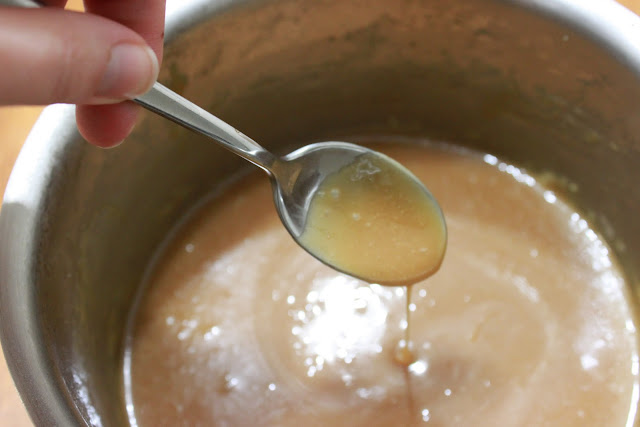Pour along the side of the glass. Then, shift the stream of beer to the center of the glass, moving your hand further away from the glass if you want the pour to have a bigger head (the foamy part).
The beer we're pouring here is Breckenridge Brewery's Vanilla Porter and it is tasty! I've been thinking about the rating system I'm going to use for this series of beer reviews and my thought was that a 100 point system is a bit overly complex. Can you tell the difference between a beer that scores 87 and 91? Probably not. Are they both going be good beers? Probably. So I'm opting for a 5 star system with the following legend:
*(1 star) Swill! I would only drink this if my mouth was on fire and it was the only thing around. A beer is going to have to be pretty skunky to get this rating.
**(2 stars) Meh. Two star beers are from the land of blah. You forget about them. You might drink them if they're free at a party or you might decide they're a waste of calories and go on a beer run for something better. Lots of grocery store beers would probably get this rating.
***(3 stars) Good. This is a beer you would order at a bar with a limited selection. It's not your favorite, but it's a solid option. This is not a beer you would purchase on a regular basis.
****(4 stars) Very good. These beers not only have a good flavor, but they have other things going for them like good mouthfeel or a great aroma. These are the type of beers you want to purchase on a regular basis.
*****(5 stars) Excellent. This category is reserved for beers that bowl you over with their awesomeness. You would fight city traffic to go to 'the good liquor store' that carries this beer. You would be proud to give these as presents to your beer snob friends. No matter how many you've had already, you won't leave any in the glass because the beer is that excellent.
Based on this scale, I give this porter 4 stars.
The malts pretty much take over the flavor in this beer as with most porters. It has caramel and vanilla notes and the aftertaste is bready. This beer tasted better and better as it approached room temperature.
It smells sweeter than it actually tastes and pours with a nice big creamy head that diminishes and leaves some lacing on the glass.
You can see the color better in the next photo, which is like red root beer.
Nerdy beer fact to impress your friends with: porters get their name from the British street and river porters they were popular with during the 18th century. A 'stout' is actually a strong porter.
 For those new to the world of beer drinking I thought I would give a very brief rundown of the different elements that go into a beer so you can start to identify what flavors you like. Beers range tremendously in flavor. They can be sweet, bitter, tart, boozy or light, smoky, floral, highly carbonated or almost flat.
For those new to the world of beer drinking I thought I would give a very brief rundown of the different elements that go into a beer so you can start to identify what flavors you like. Beers range tremendously in flavor. They can be sweet, bitter, tart, boozy or light, smoky, floral, highly carbonated or almost flat. The basic ingredients of beer are water, malts, yeast, and hops.
Malts are really the starch that ferments in the beer. This is usually malted barley or a combination of malted grains that could include wheat, rice, rye, corn, and sorghum. The roasting time and temperature of the malt is what determines the color of the beer. Beers with strong malt flavors might taste like dark fruit, roasted, caramelly, chocolatey, nutty, or bready.
Hops are actually the flowers of the hop vine and they are added for flavor, because they favor the growth of the yeast, and as a preservative. Hops impart a lot of the floral, herbal, and citrus flavors in beer.
Yeast is the fermentation agent. It also affects the flavor and may add a floral, fruity, or sour/tart taste.
So take note the next time you drink a beer you like!


































